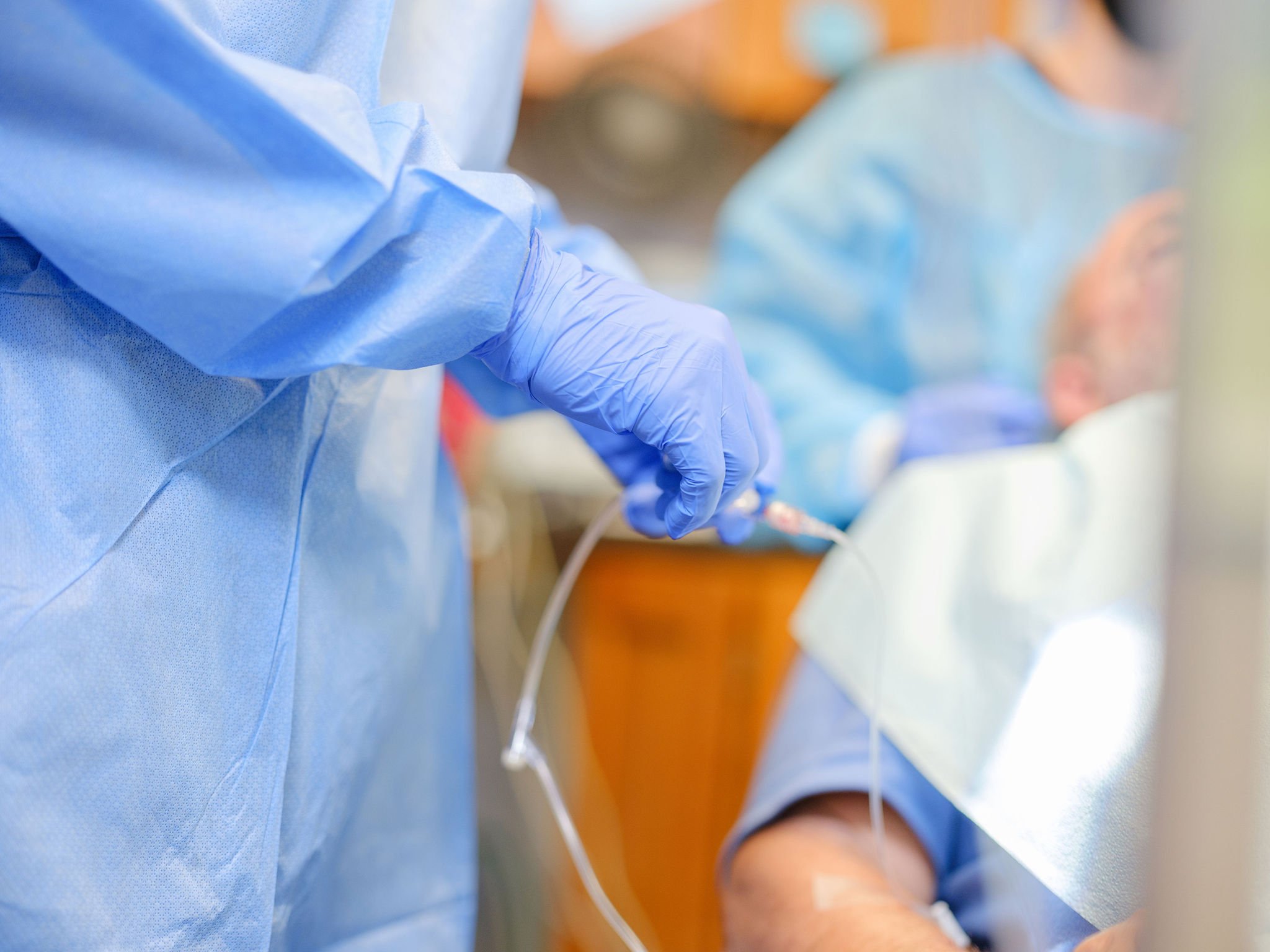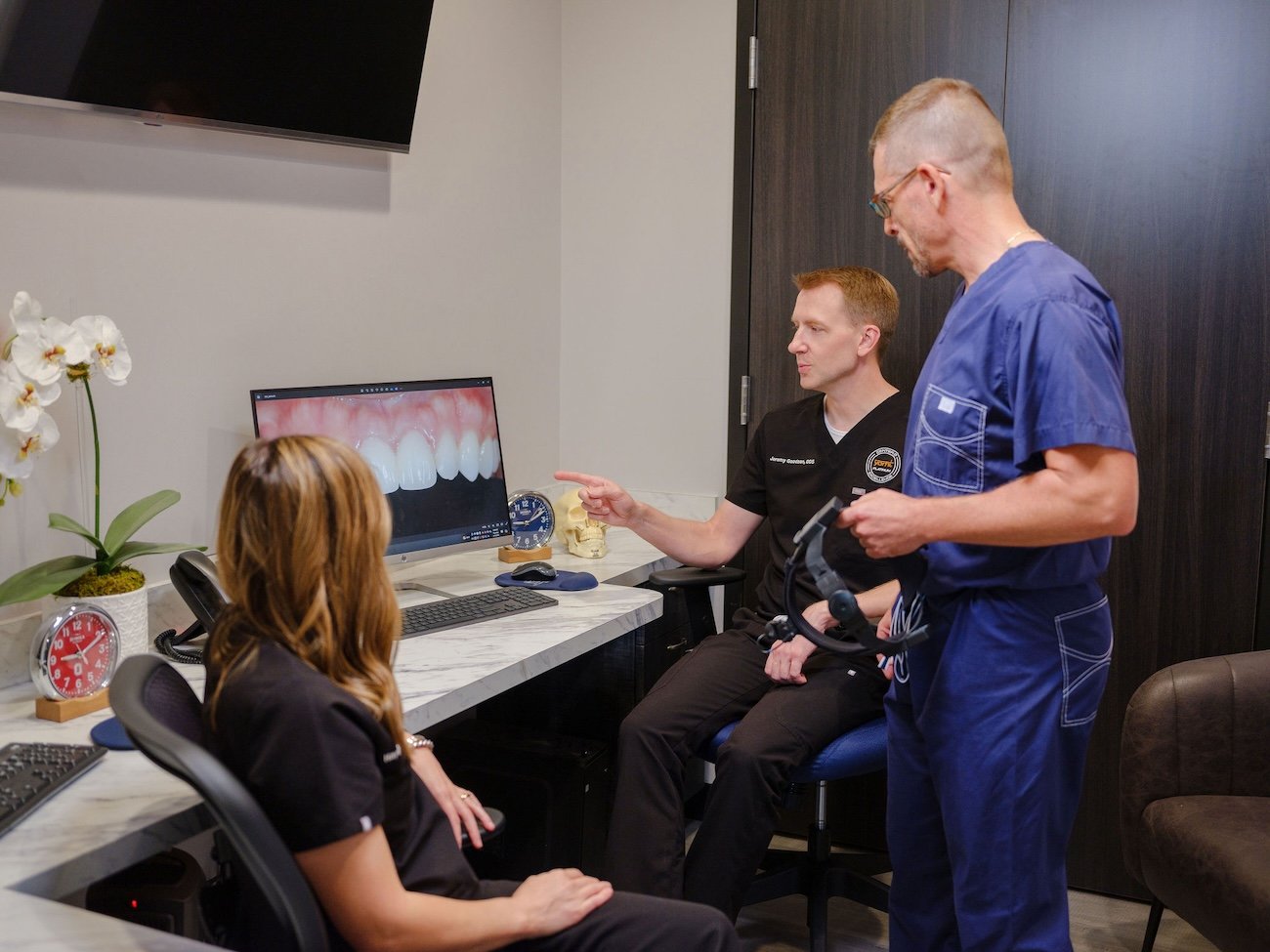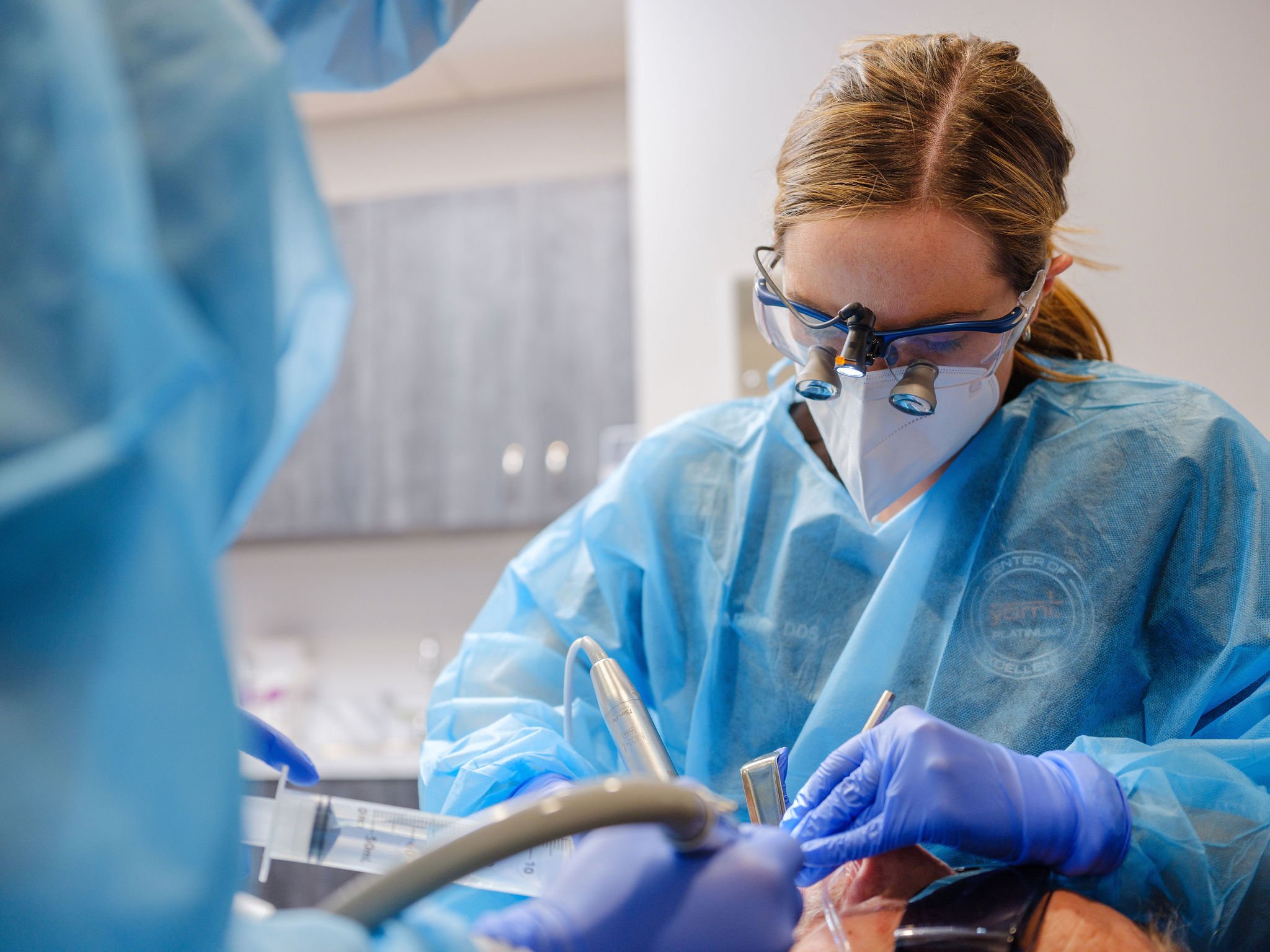
Periodontal Pocket Surgery
Restore Your Gum Health with Pocket Reduction Surgery
What Is Gum Disease?
Gum disease, known medically as periodontal disease, occurs when bacteria infects the gums and bones that support your teeth. Poor oral hygiene often leads to the buildup of bacteria, causing inflammation. The early stage, gingivitis, makes your gums appear red and swollen, and they may bleed when brushing. If untreated, gingivitis can progress to periodontitis, where the gums start to pull away from the teeth, forming deep pockets that can eventually lead to tooth loss.
Understanding Periodontal Pocket Surgery
Periodontal pocket surgery, or osseous surgery, is designed to clean out these deep gum pockets to prevent further damage and save your teeth. Dr. Hayden Fuller, our expert periodontist, performs this surgery at Oral Surgery Specialists of Oklahoma to help patients regain healthy gums and prevent the progression of gum disease.
Preparing for Surgery
Presurgery
Before your surgery, you will have a consultation with Dr. Fuller to assess your oral health and determine the best course of action. This surgery is often necessary when the pockets around your teeth are too deep to be cleaned effectively at home. Local anesthesia is typically used, but we offer several sedation options to ensure you are comfortable throughout the procedure.
What Happens During the Procedure
During the surgery, Dr. Fuller will carefully lift the gum tissue to access the roots of your teeth. This allows for thorough cleaning of the plaque and tartar buildup that has accumulated below the gum line. If there has been significant bone loss, Dr. Fuller may place a bone graft to encourage new bone growth and use growth proteins to help regenerate lost tissues. Once the cleaning and repairs are done, the gum tissue is repositioned and sutured back into place. The entire process usually takes around two hours.
Recovery and Aftercare
If you’ve had only local anesthesia, you’ll be able to drive yourself home after the procedure. Light activities can be resumed within 24 hours, but it will take several days for the surgical site to heal completely. We will provide you with detailed post-operative care instructions to help ensure a smooth recovery and maintain your oral health.
FAQ: Common Questions About Periodontal Pocket Surgery
-
Periodontal pocket surgery is a procedure to reduce the depth of pockets that form between your teeth and gums due to advanced gum disease. These pockets can harbor harmful bacteria, leading to further bone and tissue damage if left untreated. Surgery is necessary when these pockets are too deep to be cleaned effectively with regular brushing and flossing.
-
Recovery from periodontal pocket surgery typically takes a few days to a week. Most patients experience minimal discomfort and can resume light activities within 24 hours. Following the post-operative care instructions provided by your periodontist is crucial to ensure a smooth recovery and prevent complications.
-
Periodontal pocket surgery helps to eliminate bacteria and reduce pocket depth, significantly lowering the risk of future gum disease. However, maintaining good oral hygiene, including regular brushing, flossing, and professional cleanings, is essential to prevent the recurrence of gum disease.
-
Most patients experience little to no pain during periodontal pocket surgery, as local anesthesia or sedation is used to ensure comfort. After the procedure, any discomfort is typically mild and can be managed with over-the-counter pain relievers. Your periodontist will provide you with detailed aftercare instructions to minimize any post-surgery discomfort.
-
Yes, periodontal pocket surgery is often performed to save teeth that might otherwise be lost due to advanced gum disease. By reducing the depth of the pockets and removing harmful bacteria, this surgery helps preserve the supporting structures of your teeth, preventing tooth loss and promoting overall oral health.

We're Here to Help
If you have any questions or concerns about your treatment, our team is here to support you every step of the way. Don’t hesitate to reach out to us for more information or to schedule an appointment.



